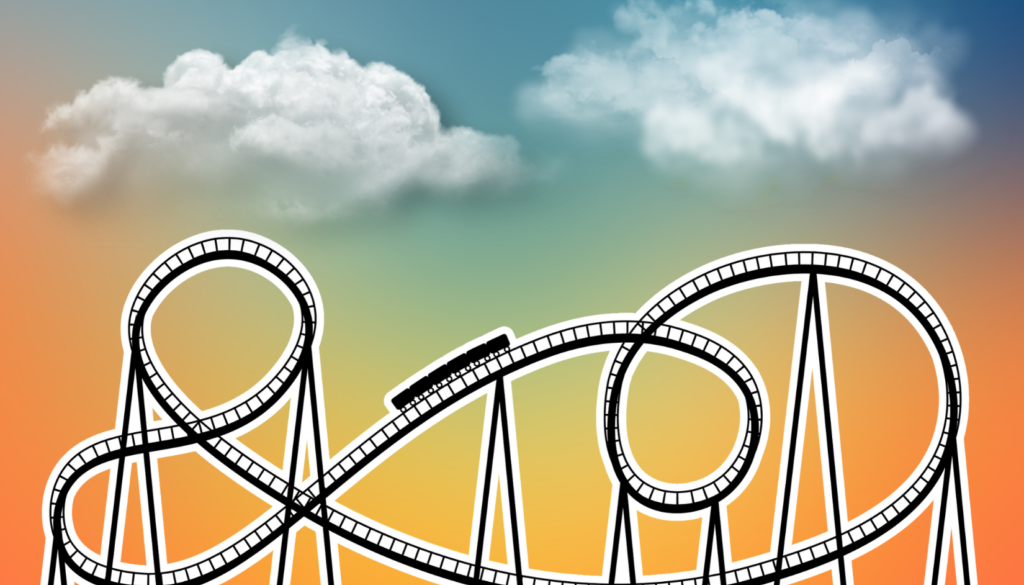The Science Behind Narcissistic Manipulation: Understanding the Emotional Rollercoaster
Narcissistic relationships are often described as emotional rollercoasters, leaving victims feeling confused, drained, and unable to break free. But what’s happening beneath the surface? In this post, we’ll delve into the science behind narcissistic manipulation, exploring how these toxic relationships affect our brain chemistry and why they’re so difficult to escape.
The Love Bombing Phase: A Dopamine Rush
When a narcissist first targets someone, they often engage in a behavior known as “love bombing.” This involves showering the victim with excessive affection, attention, and admiration. Dr. Rhonda Freeman, a neuropsychologist specializing in narcissistic abuse recovery, explains that this phase triggers a significant release of dopamine in the brain [1].
Dopamine, often called the “feel-good” neurotransmitter, plays a crucial role in our brain’s reward system. It’s associated with pleasure, motivation, and reinforcement of behaviors [2]. The intense dopamine rush experienced during love bombing can create euphoria and intense attachment, much like the early stages of romantic love.
The Devaluation Phase: Cortisol Spike
Once the narcissist feels they’ve secured their victim’s attachment, they often abruptly shift to a phase of devaluation. This sudden withdrawal of affection and increased criticism or indifference can be psychologically devastating.
Research by Dr. Karyl McBride, author of “Will I Ever Be Good Enough?” suggests that this phase significantly increases cortisol production [3]. Cortisol, the “stress hormone,” is produced by our adrenal glands in response to stress and low blood sugar levels.
Elevated cortisol levels can lead to a range of adverse effects, including:
- Anxiety and depression
- Sleep disturbances
- Difficulty concentrating
- Weakened immune system
The Trauma Bond: A Biochemical Addiction
The alternation between love bombing (high dopamine) and devaluation (high cortisol) creates what psychologists call a ‘trauma bond.’ This is a powerful emotional attachment rooted in intense, shared emotional experiences that can be likened to a biochemical addiction. In simpler terms, it’s like being emotionally hooked on a rollercoaster ride, where the highs and lows create a strong bond.
Dr. Patrick Carnes, who coined the term “trauma bonding,” describes it as “a form of conditioning that creates a fusion of intensity and fear” [4]. The victim becomes addicted not to the narcissist as a person but to the cycle of intermittent reinforcement and punishment.
This cycle mirrors the way addictive substances affect the brain. A study published in the Journal of Neuropsychiatry and Clinical Neurosciences found that the same neural circuits involved in drug addiction are activated in trauma bonding [5].
Breaking Free: Understanding is the First Step
Recognizing the biochemical nature of narcissistic abuse can be a crucial step in breaking free from these toxic relationships. Dr. Bessel van der Kolk, a leading expert in trauma, emphasizes the importance of understanding the body’s response to trauma in the healing process [6].
Here are some strategies that can help in breaking the cycle:
- Education: Learning about narcissistic abuse and its effects on the brain can help victims understand that their feelings are a normal response to abnormal treatment.
- No Contact: Cutting off all communication with the narcissist is often necessary to break the addiction cycle and allow the brain to reset. This can be one of the most challenging steps but also one of the most important. It’s like removing the rollercoaster from your life, allowing your brain to recalibrate and heal.
- Therapy: Cognitive-behavioral therapy (CBT) and other trauma-informed therapies can be highly effective in processing the experience and developing healthier coping mechanisms.
- Self-Care: Engaging in activities that naturally boost dopamine levels in healthy ways, such as exercise, meditation, and pursuing hobbies, can help manage withdrawal symptoms. This self-care is not a luxury but a necessity for your well-being, helping you, the reader, prioritize your needs during this challenging time.
- Support Groups: Connecting with others who have had similar experiences can provide validation and practical coping strategies. These groups can be a source of comfort and understanding, helping you, the reader, realize that you are not alone in your journey to healing.
Understanding the science behind narcissistic manipulation doesn’t minimize the emotional pain of these experiences. However, it can provide a framework for understanding one’s reactions and a pathway towards healing. By recognizing these relationships for what they are – a form of emotional and biochemical manipulation – survivors can begin to reclaim their autonomy and work towards healthier, more fulfilling relationships. This knowledge empowers you, the reader, to take control of your healing journey.
References
[1] Freeman, R. (2017). Neuroscience of Narcissistic Abuse. Neuroinstincts.
[2] Schultz, W. (2015). Neuronal Reward and Decision Signals: From Theories to Data. Physiological Reviews, 95(3), 853-951.
[3] McBride, K. (2008). Will I Ever Be Good Enough?: Healing the Daughters of Narcissistic Mothers. Atria Books.
[4] Carnes, P. (2019). The Betrayal Bond: Breaking Free of Exploitive Relationships. Health Communications Inc.
[5] Fisher, H. E., Brown, L. L., Aron, A., Strong, G., & Mashek, D. (2010). Reward, Addiction, and Emotion Regulation Systems Associated With Rejection in Love. Journal of Neurophysiology, 104(1), 51-60.
[6] van der Kolk, B. (2014). The Body Keeps the Score: Brain, Mind, and Body in the Healing of Trauma. Viking.

